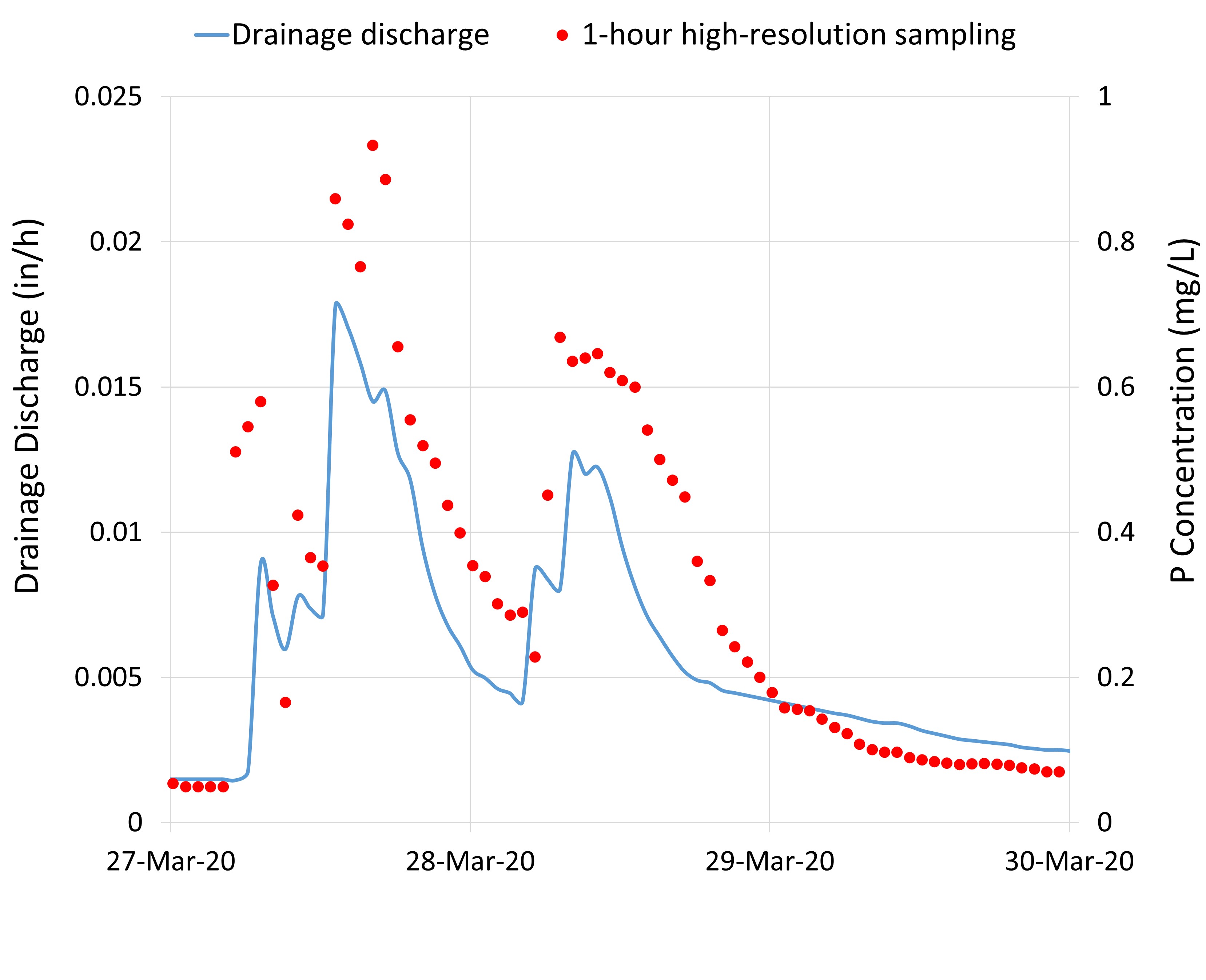Understand the inherent uncertainty of your phosphorus monitoring strategy
Grab sampling has the lowest accuracy and automated monitoring has the highest accuracy in the phosphorus load estimate.

Are you performing edge-of-field monitoring to measure effectiveness of conservation practices and their water-quality impact? Do you know the uncertainty of your sampling strategy?
Importance of phosphorus monitoring
Subsurface drainage discharge and surface runoff are pathways for phosphorus (P) loss from subsurface-drained farms. Monitoring P loss is important to evaluate the P reduction performance of conservation practices, which is measured by the P load.
The sampling strategy has a considerable effect on the uncertainty of the P load estimate. There are three strategies for collecting water samples: (1) flow-proportional sampling, (2) time-proportional sampling and (3) grab sampling. The sampling strategy affects the outcome of the monitoring project. Therefore, it is important to choose an appropriate sampling strategy based on the project objective.
Caution is advised when relying on P concentration alone from grab sampling to evaluate the P reduction performance of conservation practices. Consider the flow events in Figure 1 from a monitoring site. Phosphorus concentration fluctuates rapidly like a nutrient roller coaster, so moving the grab sampling time by just a couple of hours during an event flow would mean a very different P concentration.
To learn about the uncertainty of these monitoring strategies, read the full Michigan State University Extension bulletin E3484 on the MSU Drainage Website.




 Print
Print Email
Email


